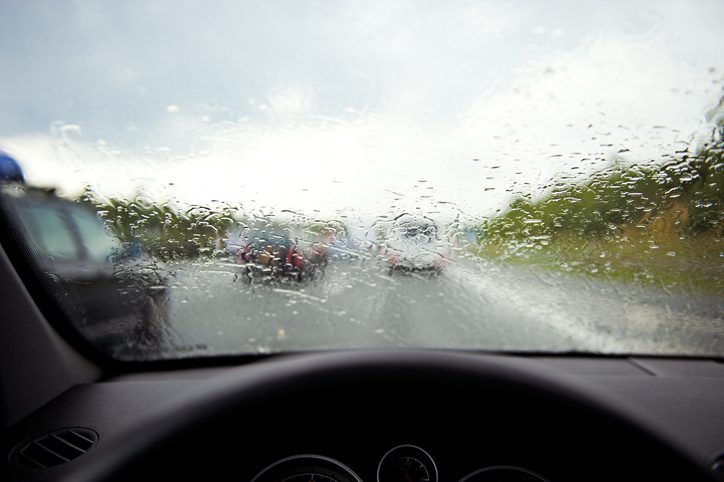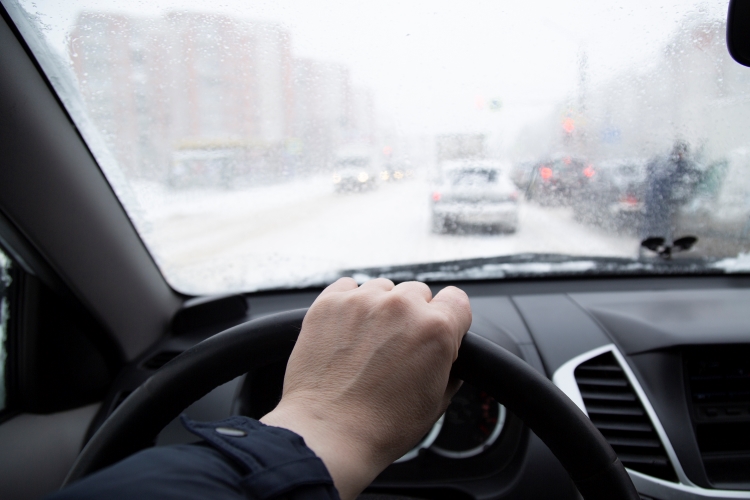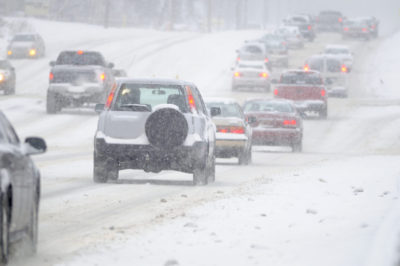Most drivers are aware of the dangers of driving while distracted. However, something that many drivers don’t realize is that in addition to the legal ramifications, these distractions can affect the premiums you pay for your auto insurance.
Any number of things can distract a driver from the road including eating, adjusting the sound system or talking to people in your vehicle. However, the distraction that often has the biggest and most dangerous impact is using a cell phone or other mobile device while driving. That’s why it’s great to look into cars equipped with hands free devices while driving like Bluetooth.
According to National Highway Traffic Safety Administration (NHTSA) data, driving while distracted killed 3,142 people in 2019. The vast majority of those accidents occurred because the driver was using a cell phone.
While concern about accidents should be enough to deter drivers from engaging in this risky behavior, state legislatures are also adding financial penalties to distracted driving.
Here’s what you need to know about the financial and legal penalties for driving while distracted.
Distracted Driving and State Laws
With the exception of Missouri and Montana, all U.S. states, as well as the District of Columbia, Puerto Rico, Guam and the U.S. Virgin Islands, have instituted a ban on texting while driving for people of all ages.
Most states have made texting while driving a primary offense, which means law enforcement has the right to pull over an offender simply for violating the ban.
In states where the texting prohibition is a secondary offense for those over the age of 18, such as Florida, Nebraska and Ohio, the texting ban can only be enforced if the driver is also violating a primary offense. For example, if a driver fails to stop at a stop sign because she is distracted by her cell phone, the officer who pulls her over for failing to stop can also cite her for texting while driving.
The penalties for texting while driving vary from state to state. At one end of the spectrum are states like Virginia that charge a $20 fine for a first offense. On the other end are states like Alaska that can levy a maximum fine of $10,000, plus a maximum of 10 days in prison for a first offense. In between those extremes, drivers face financial penalties ranging from $30 to $750. They also face additional penalties that may range from demerit points on their licenses to jail time.
In every state with a texting ban, the penalty goes up with subsequent offenses. Drivers in states that assign moving violation points for texting while driving are more likely to see a negative effect on their auto insurance premiums.
Additionally, even if you yourself are not a distracted driver, other people’s distracted driving can affect your insurance premiums. One factor that can affect your auto insurance rates is the number and severity of crashes across the population of drivers in the country and in your state. To the extent that distracted driving contributes to an increase in accidents, other people’s distracted driving could cause your auto insurance rates to increase.
Mitigating the Dangers of Distracted Driving
Safe drivers who want to keep themselves out of danger may wonder what they can do to reduce the problem of distracted driving.
To start, it’s important to understand which behaviors are most likely to distract you behind the wheel or cause accidents. This means that in addition to refraining from using your phone while driving, you also need to:
- Drive defensively
- Leave enough room between yourself and vehicles in front of you
- Check your blind spots
- Refrain from driving while fatigued or impaired
- Wear your seat belt and insist that your passengers are also properly secured
Using Technology to Be a Safer Driver
Though cell phones may be behind the majority of distracted driving incidents, mobile technology can also help to reduce distractions and reward you for safe driving.
For example, drivers of all ages can take advantage of Apple’s Do Not Disturb While Driving© feature that seeks to minimize distractions by muting the driver’s incoming calls, texts and notifications. Both iPhone and Android devices can generate an auto-reply message to alert those calling or sending a text that you’ll be back in touch when it’s safe to do so.
In addition, telematics technology can measure your driving habits via a free mobile app that can be downloaded to any smart phone. While you are driving, the app will run passively in the background, using sensors that are already in your phone, such as GPS, accelerometer and gyroscope.
Since this technology is app-based, rather than a tracker installed in a specific car, it will track your driving anytime you get behind the wheel, even if you are driving someone else’s car. This means you will also have to alert the app anytime you are a passenger, or traveling by bicycle, bus, train or other form of transportation to ensure only your driving habits are measured. These measurements can help you understand when and how you drive.
Telematics apps measure things like:
- The time of day you drive
- Your speed
- Instances of hard braking
- Distance traveled
Keeping Your Eyes on the Road
Distracted driving has always been a concern on the road, but the sheer number of potential distractions has increased with all the advances in mobile technology.
Mobile phones offer multiple ways to lose focus on your driving — whether it’s the need to use a hand-held device, concentrating on your conversation (even when you’re using a hands-free device) or the temptation to check (or send) a “quick” text. Even instances like drowsy driving or aggressive driving can be a distraction.
To put the texting dangers into perspective, the NHTSA reports, “Sending or reading a text takes your eyes off the road for five seconds. At 55 mph, that’s like driving the length of an entire football field with your eyes closed.” Probably not a choice you’d consciously make.
But even though new technology can be a distraction behind the wheel, it can also offer solutions to the problems of distracted driving. Taking advantage of do not disturb options on your phone and telematics tracking apps can give you the tools you need to help keep your eyes on the road, your hands on the wheel and — perhaps most importantly — your mind focused on your driving.
Need a refresher on the rules of the road where you’re driving? Click the image to go to our state of driving page. Then select a state to learn more about its car culture, average gas price, insurance requirements, distracted driving laws, and more.








It’s a lot to take in all at once for some elderly but I think the information was very good, important and educational. The cognitive section is something we sometimes don’t realize how important it is when we sit behind the wheel. I’m knowledgeable of persons who think that when they take a drink their driving is better and you just can’t convince them otherwise 😒. The information was really worth the time spent reading helpful to someone who doesn’t hit the road very often any more but to be more alert when I’m behind the wheel. “THANKS”.
AARP COMMERCIAL . PLAINLY SHOWS HOW NOT TO DRIVE. THE STUPID MAN IS BUSY LOOKING & TALKING TO THE PASSENGER’S IN THE VEHICLE. I RETIRED FROM “GREYHOUND” AS A BUS DRIVER. THEY WOULD “FIRE” YOU INSTANTLY. FOR THIS OFFENSE.
Phones should not be able to be used while driving & innocent people
should not have to pay higher insurance because so many other people
are driving and texting; (THE ONES THAT ARE DRIVING & TEXTING SHOULD HAVE TO PAY THE HIGHER RATES & FURTHER MORE; I THINK
THEY SHOULD LOOSE THE DRIVING PRIVILEDGE FOR AT LEAST 1 YR.
FOR FIRST OFFENCE & 2ND OFFENCE SHOULD BE FOREVER !!!
I drive 500 miles/year and do not own a cell phone.
I nerves for ever talking when I drives car
I must say, as a lot as I enjoyed reading what you had to say, I couldnt help but lose interest after a while.
This week I received a call from our very good friends son. He informed us that his parents had been rear ended by a distracted driver, were pushed into the intersection and his father was in the hospital seriously injured. His mother however was killed. Two innocent people. At a red light, lives forever changed and a sweet, sweet, caring lady has passed.
There is no excuse, drivers are not caring or responsible if on their phones or driving while intoxicated. Phones should not be able to be used while driving, period! Much harsher fines and laws need to be put in place. So sad innocent people are losing their lives’ for this
Pauline Galvez
Thanks for sharing your story, Pauline. So sorry for your loss.
When in the car (driving) think yourself as a pilot of an airplane without autopilot feature.
While following another vehicle through town at about 28 MPH in a 25 zone I looked away to observe the installation on an electronic signboard on town property. The lady suddenly stopped for a person to cross at a pedestrian crosswalk. I rear -ended her causing some damage to her vehicle and totaled my pick-up truck, with no injuries . I’ve driven pass the area and estimate I had looked away 2 1/2 seconds.
No the sign is in operation flashing six to eight lines of text, which requires more than my 2 1/2 seconds to read. I wonder if the Town might be partially liable for contributing to a future accident? Several surrounding towns have erected such signs in the congested centers of their towns.
I don’t answer my phone or text in any car I am driving. Thank you for informing me
I know just exactly what you re talking about, as I find that just turning the radio in a car on or off takes my eyes off the road and I find myself weaving just a little, so for the most part I don’t like eating in my car while going down the road, I don’t like to try answering the phone even tho it comes thru the radio in my car and the controls are on the steering wheel, so I find that any thing that I might do while driving will take my mind off my driving, so I try not to let things take my eyes off the road.